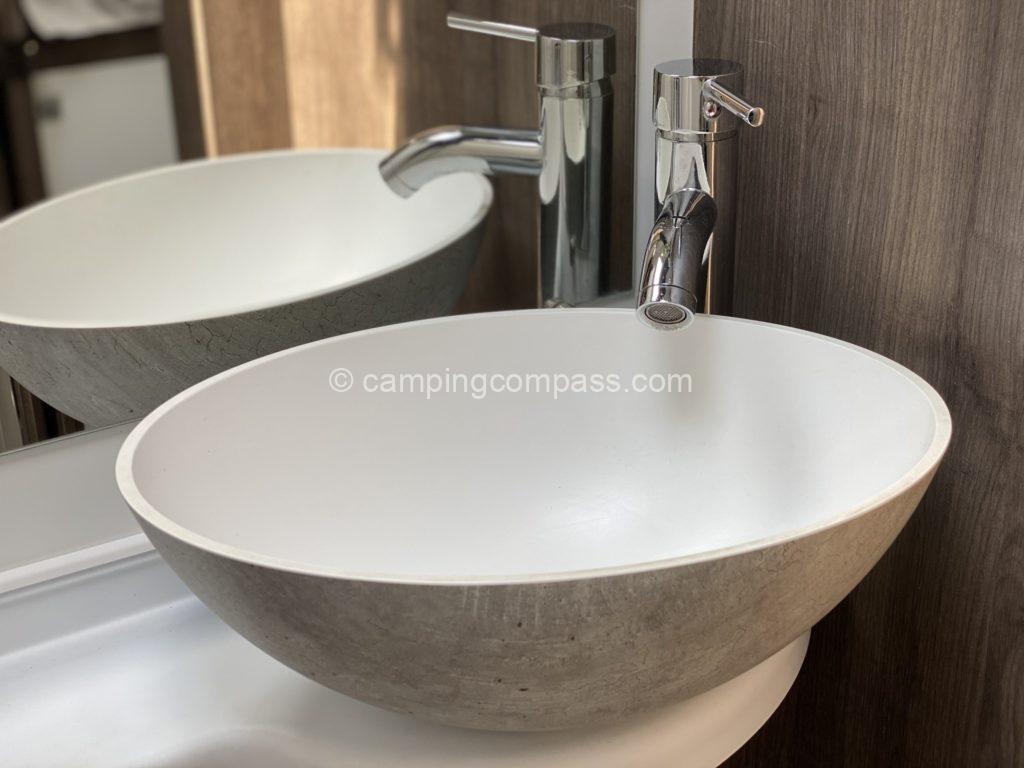A kitchen and toilet should be in every motorhome or camper van. It’s a luxury, independence and allows you to spend time away from the campsite. All larger motorhomes and campervans, except small campervans such as the VW California, have a shower with hot water
motorhomes have tanks for drinking and waste water. The fresh, potable water tank is most often filled through a hole in the side of the motorhome. If you are just renting a motorhome, try not to put diesel fuel in the water tank.
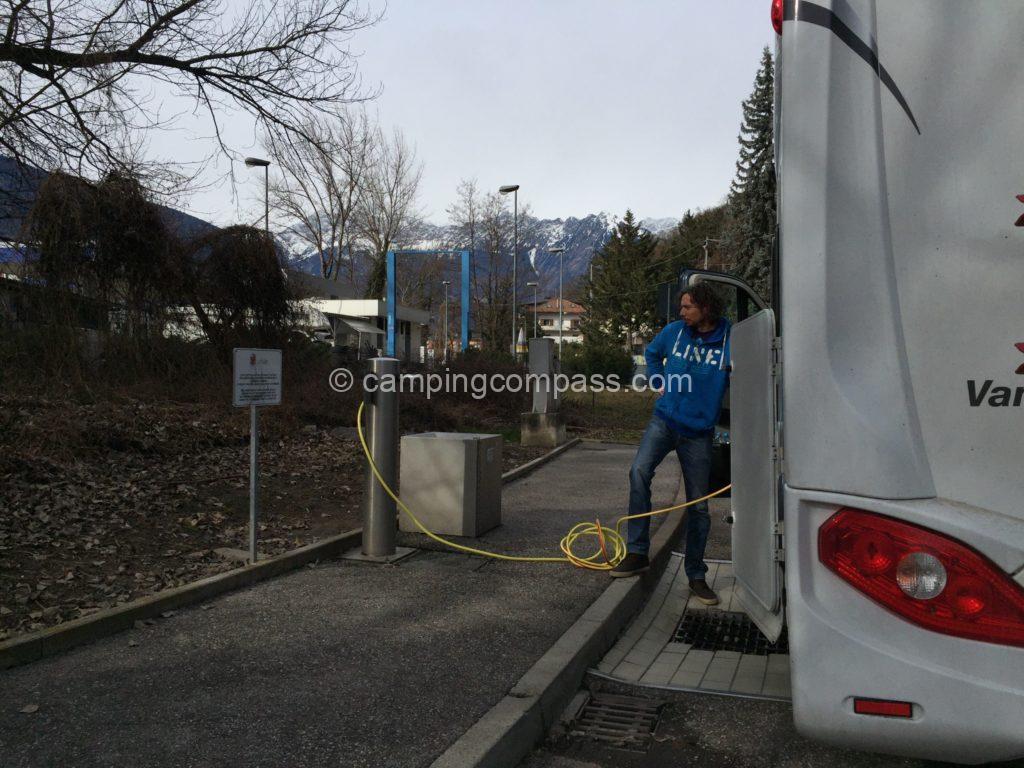
Motorhome water supply system
The water system has pipes for cold and hot water. Hot water is heated in a boiler that uses either gas, petrol or diesel. The most common is the Truma heater version Truma Combi, which is a combination of hot air heating with a boiler, or the Adle heater.
When the tap is opened, a pump is started which pushes hot and cold water through the tap. The water then flows through the waste pipe into the waste tank.
“The waste water from the motorhome does not spill out onto the ground. So nothing leaks out of the motorhome and it doesn’t smell’
There are also systems that continuously pressurise the water in the motorhome’s pipes, so that when the tap is opened, the pump does not have to start immediately. This system is mainly used by large and luxurious motorhomes.
Motorhome fresh water tank
The fresh water tank is most often located inside the motorhome. It is therefore nice and warm and does not freeze in winter. Fresh water tank most often has a capacity of 80-12 litres. It depends on the size of the motorhome. Smaller campervans like the VW California or Mercedes Marco Polo only have a tank of about 40 litres. Each tank has a large opening through which the inside can be cleaned from time to time.
I recommend throwing a silver tablet into the tank, which should prevent bacteria from forming. However, it is best to drain the water before each time the motorhome is shut down for an extended period of time. To drain it, there is a valve inside the motorhome that, when opened, will release the water somewhere under the motorhome. Most often the valve is located in the kitchen or bathroom area. However, this is completely different for each model and brand.
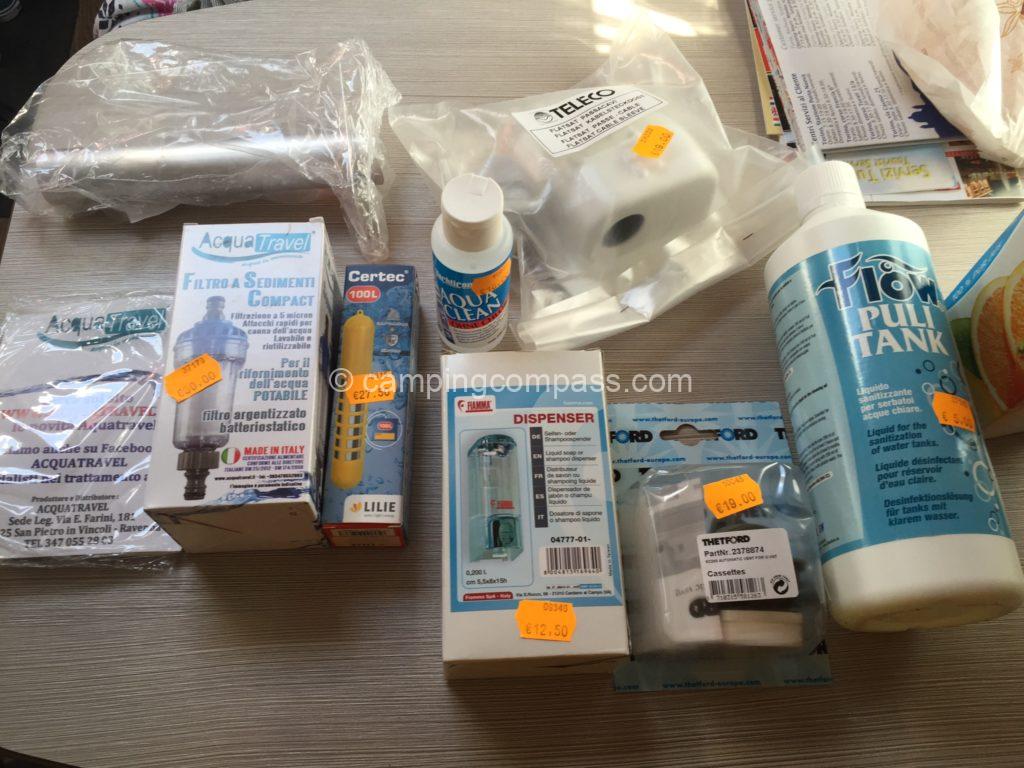
There are special chlorine products for cleaning the drinking water tank. The way it works is that you fill the tank with e.g. 1/3 of water, put some preparation in and go for a ride in the motorhome. The chlorinated water in the tank gets a little grey and you have clean water. You then drain the chlorinated water.
Drinking water in the motorhome
The water from the fresh water tank is basically drinkable. It depends on where you scoop it, and if you’re careful you can drink the water without any problems
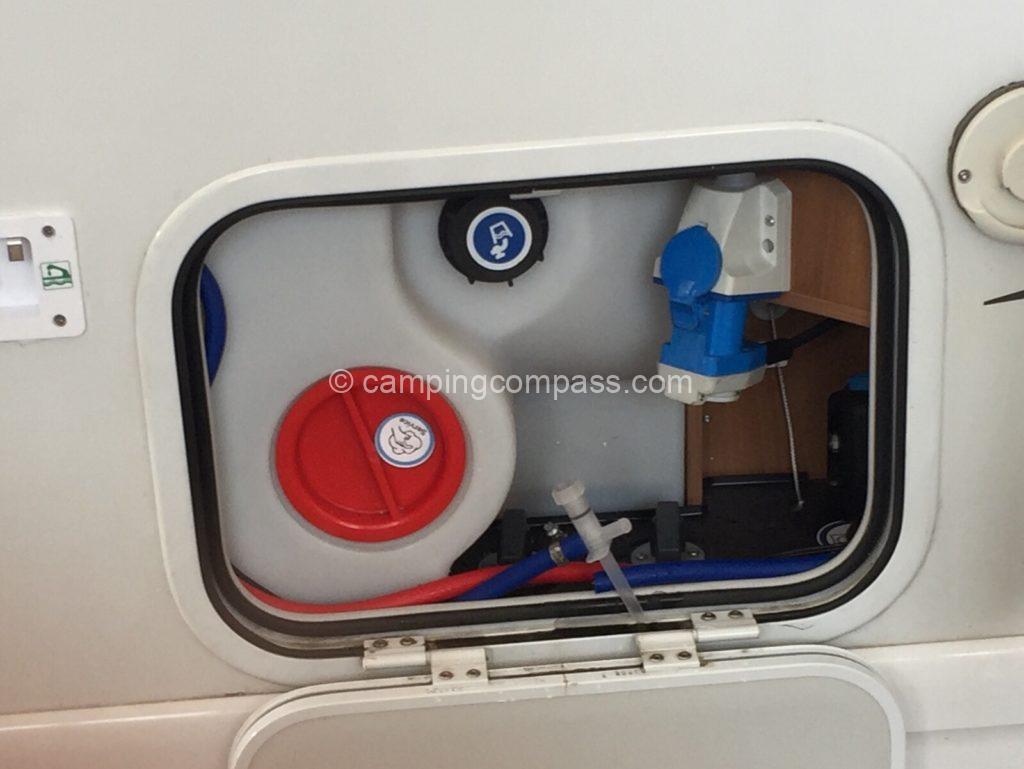
There are also systems that can make even non-potable water safe to drink using UV and filters. That’s pretty cool if you’re going to places where you’re not too sure about the quality of the water.
Motorhome wastewater system
The waste tank is used to store waste water, i.e. water from the kitchen or bathroom. This is water from the sink, so there is some food residue in the water, for example. This water is discharged at the motorhome service points. Not every campsite in Eastern and Southern Europe is prepared for this.
“It is best to use only eco-friendly dishwashing detergents, eco-friendly shower soaps and shampoos”
Then the water can be discharged, for example, into a drain at a pump or rest area.
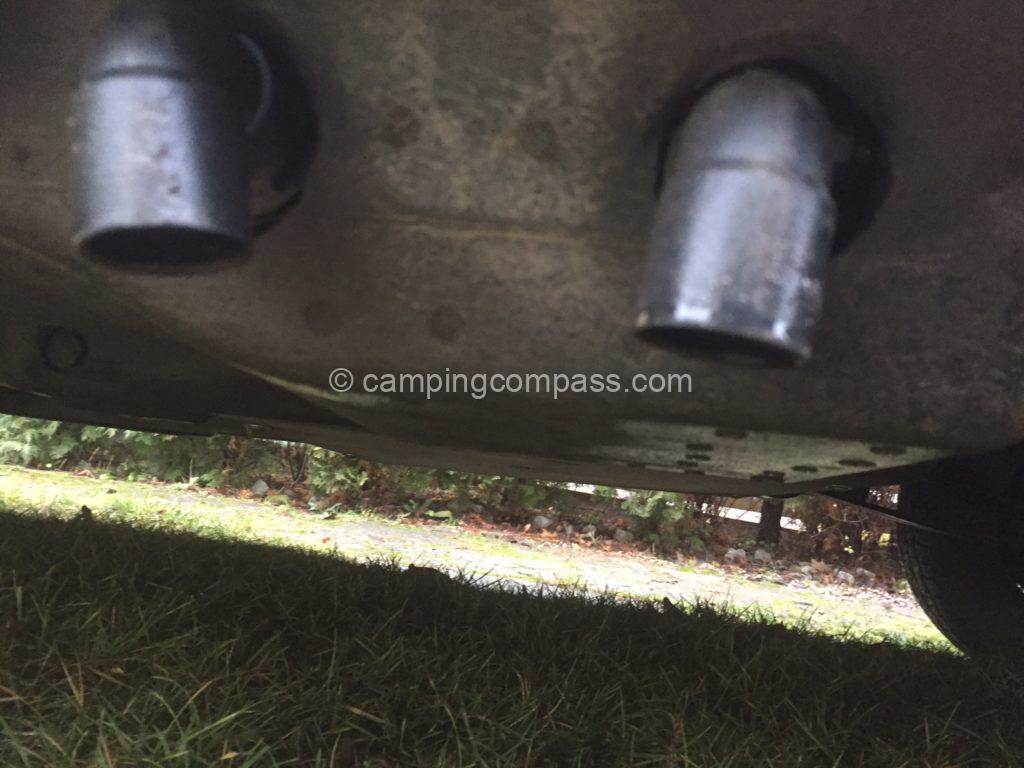
The waste tank can be cleaned with special products, the process is similar to cleaning a fresh water tank. You spray and pour.
Motorhome bathroom
As I wrote, almost all motorhomes and vans have a bathroom. The size and layout of the bathroom depends on the model and size of the motorhome. Sometimes the shower is separate from the toilet, sometimes it is part of the toilet
The shower is usually well heated and is also well used for drying windbreakers after skiing or wetsuits. There is hot and cold water in the shower, just like at home. The only difference between showering at home and in the motorhome is the amount of water available.
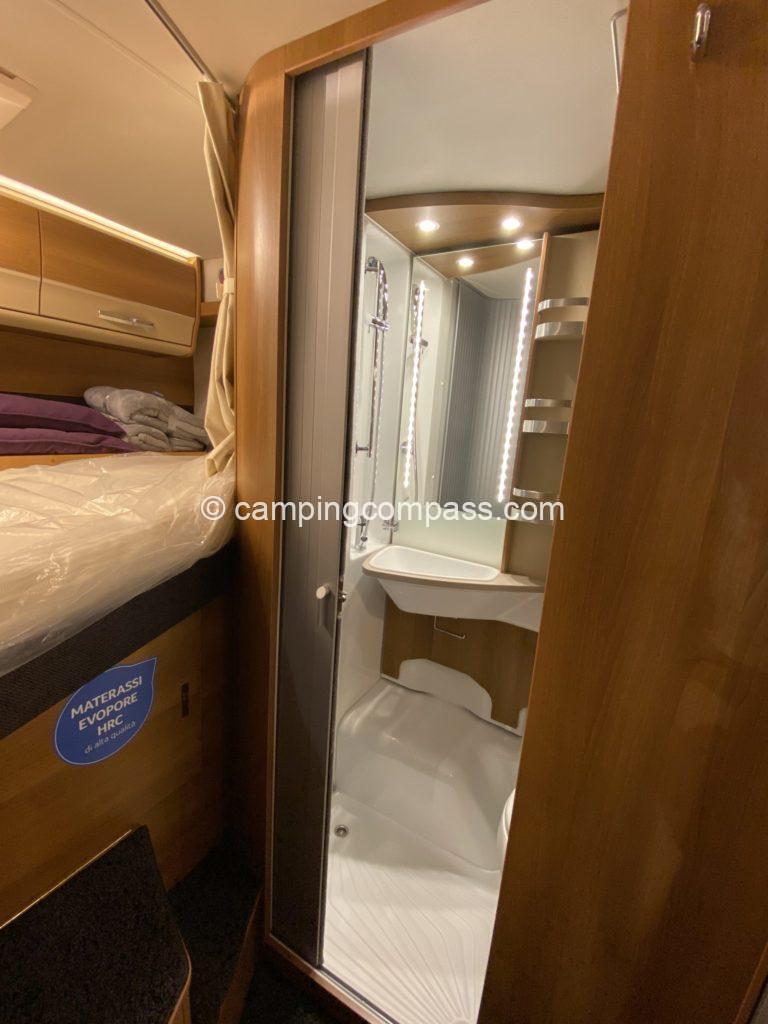
Showering is usually done pretty gently, I soak, turn off the water, soap up and then take a shower. The thing to remember is that you only have 80 litres of water.
Motorhome outdoor shower
Taking a shower next to the motorhome is fine if you do any water sports. Throw off your wetsuit and rinse off the salt water. Some motorhomes have a window on the side of the bathroom, so it’s possible to pull the hose directly from the bathroom outside. If this is not possible, an external shower needs to be fitted. The hose is then connected using a quick coupler.
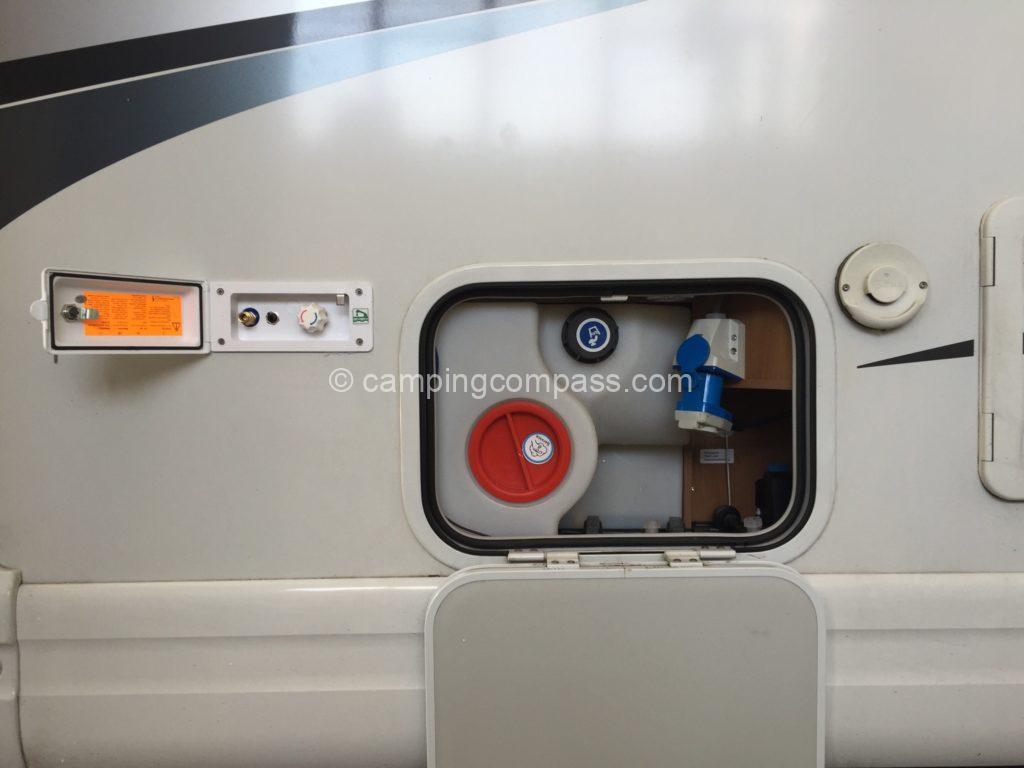
The outside shower can also be used to wash the dog or flush away sports junk.
Motorhome toilet
A toilet must be provided in every motorhome or van. If you don’t just want to go camping, use the toilet. The way a chemical toilet works is that everything you put in it goes into a sealed container that someone called a cassette.
Once the cassette is filled, the contents are poured out at the RV sites. Such sites are either at the campsite or at motorhome parkings.
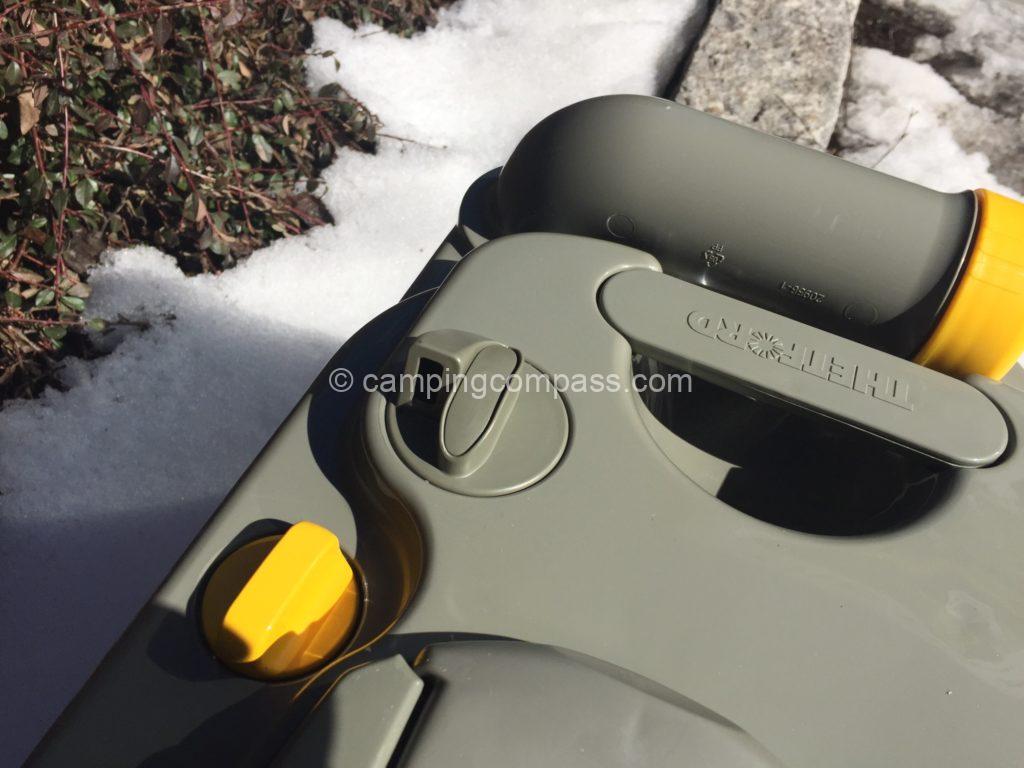
A tablet or liquid chemical is put into the chemical toilet. There are green ones which are more eco-friendly and then blue ones which are less eco-friendly. The green ones are less effective and the contents can smell more than the blue ones. The blue ones stink anyway, but they do have a chemical smell.
“If you’re travelling away from campsites, it pays to own one spare toilet cassette”
You have no problem with toilet capacity then. The cartridge is only about 15 litres. Luxury motorhomes have toilet capacities of up to 300 litres. Some brands have special compartments for extra, spare toilet cassettes. It’s worth it, a spare cassette costs up to €100.
Special toilet paper should be used in the motorhome toilet, which is easier to unfold. The one you use at home would stick all over the inside of the cassette and only cause problems.
Motorhome SOG
SOG is a chemical-free toilet. This means you don’t have to pour any chemicals into the chemical toilet cassette. The way it works is that when you open the toilet, a small fan is triggered to pull air through the toilet opening from the motorhome into the cartridge, then into a special carbon filter and out of the motorhome. Either under the motorhome or on the roof. The SOG is fitted as standard to most premium or luxury brands
“If you don’t already have a SOG, make sure you install one”
SOG is a fantastic thing. You’ll save money on chemistry, you’ll be able to flush the toilet anytime even if it’s not full yet, and most importantly the toilet will NOT stink inside or out.
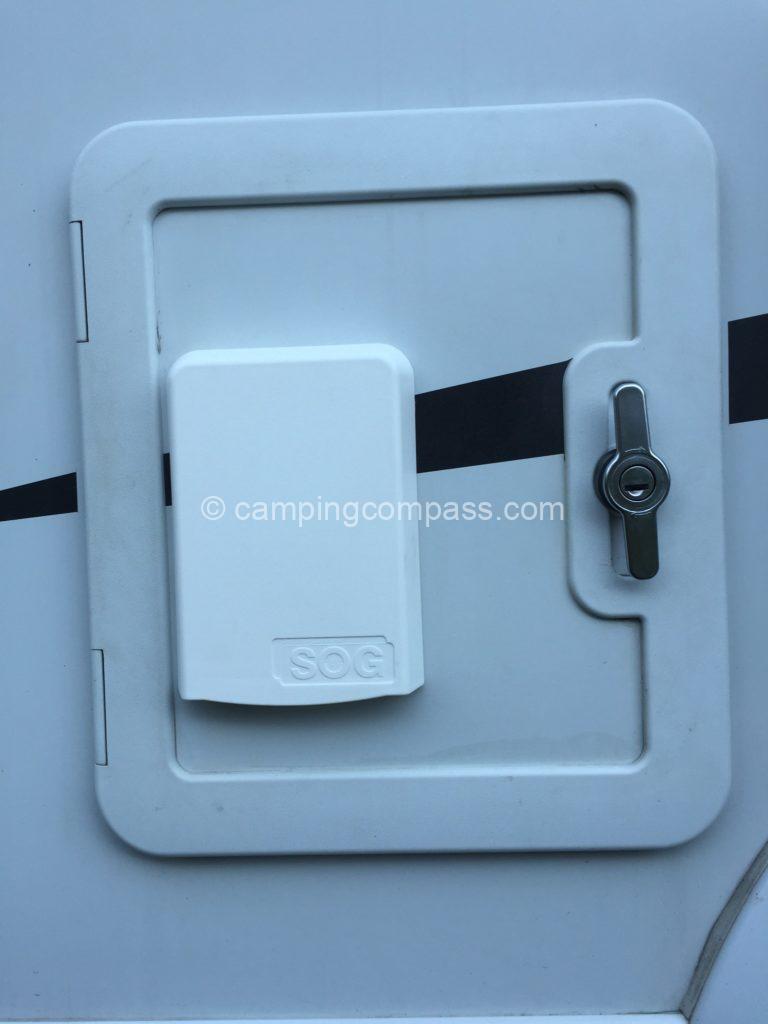
SOG is bought specifically for the model of chemical toilet you have in your motorhome. It costs around 150 euros and you change the filter every year for around 20 euros. Do the math on how much you spend on chemistry.
We had SOG in the old Knaus and we have it now in Club Joker. I can’t really imagine comfortable motorhoming without it.
Motorhome water consumption
As I’ve written before, water is scarce in a motorhome. 80-100 litres is not a lot. So you have to save water quite a bit. Washing dishes, cooking, showering, flushing the toilet. You use the 80 litres for all that.
Our experience is that you spend less water to shower two people than to wash dishes for two people. So if you cook a lot of spaghetti and ketchup, you’ll use about a day’s worth of water.
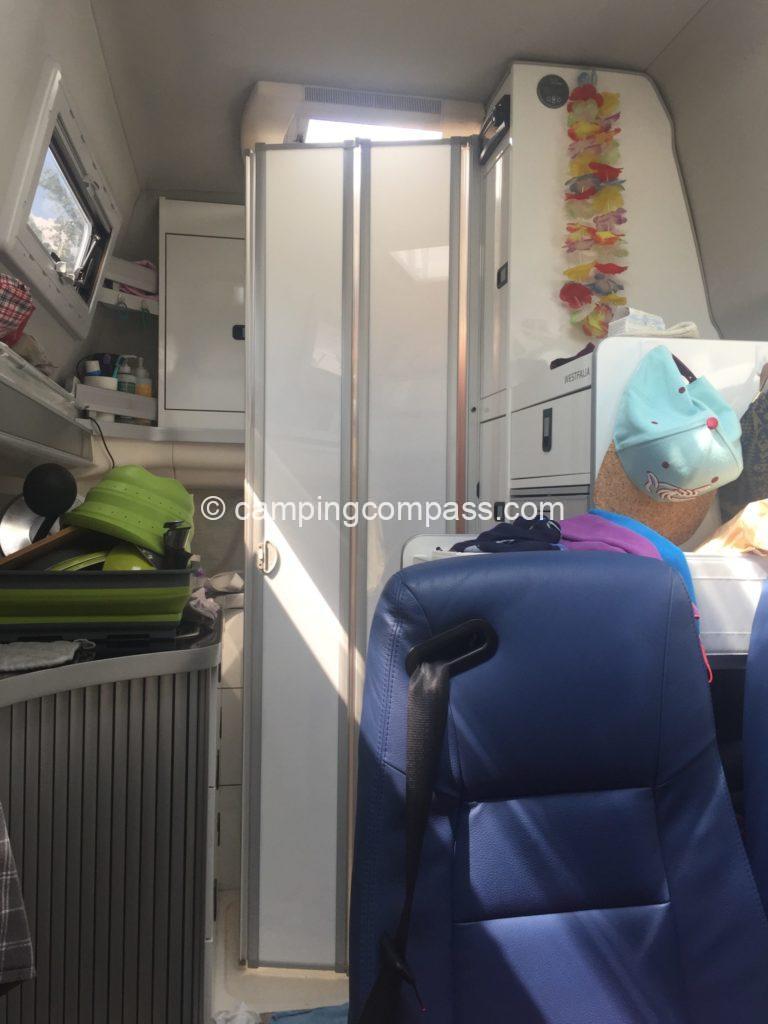
It’s best to plan your trip with stops at motorhome sites, refill with fresh water every 2 days or so, drain the water and flush the toilet.
If you have a garage in your motorhome, buy some collapsible flasks and take more water with you if you need it. This is especially if you are going to some remote places, beaches or mountains.

